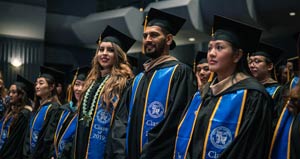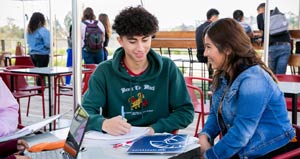
Instructing Diverse Learners: Culturally Responsive Pedagogy
By: Dr. Monique Woodley
Photo by Ben Hershey on Unsplash
“The controversial Nike advertisement revealed in September 2018 has a picture of Colin Kaepernick with the words ‘Believe in something even if it means sacrificing everything.’ Based on your knowledge of Colin Kaepernick’s situation with the NFL, do you agree or disagree with this statement? Write your response.” This is the type of culturally responsive question I posed to my class of athletes. I knew that this contemporary controversy would get students discussing and writing!
There is an unspoken expectation that college students can learn and comprehend any information without any adjustments and all college students need is effort. Some aspects of this expectation is true, college students can learn and comprehend with effort. However, the reality is, it is the professor’s duty to provide culturally relevant and responsive examples for students to learn the content. This is the reality.
As a new professor, I learned this reality fast! Specifically, while teaching freshman English I learned, after the first the first class session, that I needed to implement culturally responsive instruction in order to make student learning meaningful. I taught two sessions of athletes, so it was easy to make the learning relevant. So I opened each class with a sports or American current event. While they discussed and wrote their opinions they were actually practicing writing topic sentences and supporting their opinions with evidence and analysis. I am not certain the students were aware of my strategies, but it definitely made them interested in the course content instead of the normal, “You need this” rationale.
Expert Ladson-Billings (1994) states that culturally responsive (or relevant) pedagogy “empowers students, intellectually, socially, emotionally, and politically, by using cultural references to impart knowledge, skills, and attitudes” (p. 382). It is important to note that the purpose of culturally responsive instruction is to integrate the demographics of the current students with the content. Even more recently, Rajagopal (2011) posits that when “students feel comfortable with how a teacher talks and discusses academic material, they will feel comfortable enough to focus and learn the content” (p. 22). For example, I also learned very quickly that the examples I used for students athletes could not be the same examples that I used for my class of international students – the previous topics were not culturally relevant. So, I began to use examples about global politics and travel to interest them.
University professors, could have various demographics of students from all over the world, so you might be asking: How can professors possibly make their instruction culturally relevant for all students? My personal tip is: Get to know your students as quickly as possible. What are their interests? What is their degree objective? What do they expect to learn at the end of the course? Professors can then tailor each lesson to fit student needs and interests. This is culturally responsive instruction.
References
Ladson-Billings, G. (1994). The dreamkeepers: Successful teachers of African American children. San Francisco: Jossey-Bass.
Rajagopal, K. (2011). Create success!: Unlocking the potential of urban students. Alexandria, VA: ASCD.







